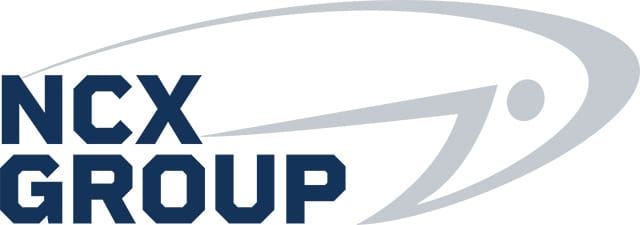Building a Comprehensive Cyber Risk Program for Business Sustainability
Tackling Cybersecurity & Mitigating Cyber Risk For Businesses Growth & Success
Over the past two decades, I’ve engaged with numerous CEOs to tackle Cybersecurity and the mitigation of Cyber Risk in their businesses. Continually, I am astounded by the number of exceptionally brilliant minds that fail to grasp the gravity of this risk and its potential impact on their enterprises. Many remain disengaged from the pressing issue of cyber risk.
Research paints a stark picture of the cybercrime landscape in 2024 and moving forward. In a recent post, I delved into the chilling costs of cybercrime. It’s crucial to comprehend that modern cyber attacks are designed to disrupt your business, leading to expensive downtime, lost revenue, damaged reputation, and the hefty costs of ransomware recovery. Consider these statistics on Ransomware:
- The average ransomware attack results in 22 to 24 days of downtime for the affected business or organization.
- The cost per hour during a ransomware event is approximately $10,000 for an SME.
- The daily cost can escalate to $240,000.
- For larger businesses, the impact can be in the millions lost with downtime.
- Do the Math for Your Business.
As a CEO, your leadership and vision are vital to your company’s success and sustainability, especially in the realm of cybersecurity. Cybersecurity is the singular business process that intersects with every other process in your organization. Think of it as the Lord of the Rings: the one process to rule them all.
Through thousands of assessments, we often encounter fragmented cyber risk programs, rarely finding a mature or complete framework. Without a comprehensive cyber risk program, you remain vulnerable to myriad threats that can devastate your financial health, reputation, and regulatory compliance.
Recently, I’ve had the privilege of conversing with numerous distinguished business leaders to understand how CEOs perceive Cyber Risk in 2024. Surprisingly, CEOs today appear as disconnected from Cybersecurity and Cyber Risk as they were in 2019 when I engaged with over 520 CEOs throughout the year. Many expressed uncertainty about where to begin with cybersecurity. These discussions highlighted the need for today’s CEOs to adopt a straightforward, actionable plan.
Here’s a detailed, actionable plan:
Phase 1: Building Your Foundation
- Cybersecurity Assessment
- Objective: Conduct an initial assessment to understand our cybersecurity posture and identify critical assets, data flows, and vulnerabilities. Outcome: A clear picture of our risks and areas needing immediate attention.
- Framework Adoption
- Objective: Adopt a recognized cybersecurity framework, such as the NIST Cybersecurity Framework, to guide our efforts. Outcome: A structured approach to managing and reducing cyber risks.
- Policy Development
- Objective: Develop key policies, including Acceptable Use Policy, Access Control Policy, Incident Response Policy, and Data Protection Policy. Outcome: Clear guidelines and standards for all employees, ensuring everyone understands their role in maintaining security.
- Cybersecurity Awareness Training
- Objective: Implement mandatory training programs to educate employees about cyber threats and best practices. Outcome: A more informed and vigilant workforce, reducing the risk of human error.
Phase 2: Building the Team and Processes
- Hiring Key Personnel
- Objective: Recruit or appoint essential roles such as Security Manager, Security Analyst, and Incident Response Coordinator.
- Outcome: A dedicated team focused on managing and mitigating cyber risks.
- Third-Party Risk Management (TPRM)
- Objective: Develop a TPRM program to assess and manage risks associated with our vendors and service providers. Outcome: Reduced risk from third-party interactions, ensuring our partners adhere to our security standards.
- Incident Response Plan (IRP)
- Objective: Develop and document a comprehensive IRP to address potential security incidents. Outcome: Preparedness to quickly and effectively respond to and mitigate incidents, minimizing impact.
Phase 3: Implementing Technical Controls
- Access Management
- Objective: Implement strong access control measures, including multi-factor authentication (MFA) and the principle of least privilege. Outcome: Enhanced protection against unauthorized access.
- Data Encryption
- Objective: Ensure data encryption at rest and in transit, especially for sensitive customer data. Outcome: Protection of our data integrity and confidentiality.
- Network Security
- Objective: Deploy network security measures such as firewalls, intrusion detection/prevention systems (IDS/IPS), and secure network architecture. Outcome: Robust defenses against network-based attacks.
- Vulnerability Assessments and Penetration Testing
- Objective: Conduct regular assessments and testing to identify and remediate security weaknesses. Outcome: Continuous improvement of our security posture.
Phase 4: Continuous Monitoring and Improvement
- Security Information and Event Management (SIEM)
- Objective: Deploy a SIEM solution for real-time monitoring and analysis of security alerts. Outcome: Immediate detection and response to potential threats.
- Compliance and Audits
- Objective: Review and audit our security controls and processes to ensure compliance. Outcome: Assurance that we meet regulatory requirements and best practices.
- Feedback Loop
- Objective: Establish a mechanism for continuous improvement based on incident reviews and audit findings. Outcome: Adaptability and resilience against evolving threats.
Phase 5: Client Assurance and Communication
- Client Communication Plan
- Objective: Develop protocols for responding to client inquiries about our cybersecurity measures. Outcome: Transparency and trust with our clients, enhancing our reputation.
- Engagement with Clients
- Objective: Proactively engage with clients to understand and meet their security requirements.Outcome: Strengthened client relationships and competitive advantage.
Conclusion
By implementing this comprehensive cyber risk program, we will protect our assets and data and build trust with our clients and partners. This initiative is crucial for our business’s sustainability and growth. Let’s take the necessary steps to ensure our cybersecurity framework is robust, adaptable, and aligned with our strategic goals.
Your leadership in this endeavor is vital. Together, we can safeguard our future and thrive in an increasingly digital world.
Repost from LinkedIn – https://www.linkedin.com/pulse/building-comprehensive-cyber-risk-program-business-mike-fitzpatrick-mlydf/
P.S. Cybersecurity isn’t just an IT issue; it’s a business imperative. Investing in robust cyber measures today secures our business’s future and builds trust with your clients.
#CyberResilience #CISOStrategy #FutureProof”
